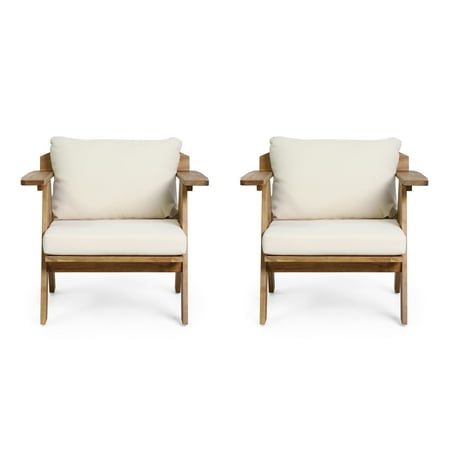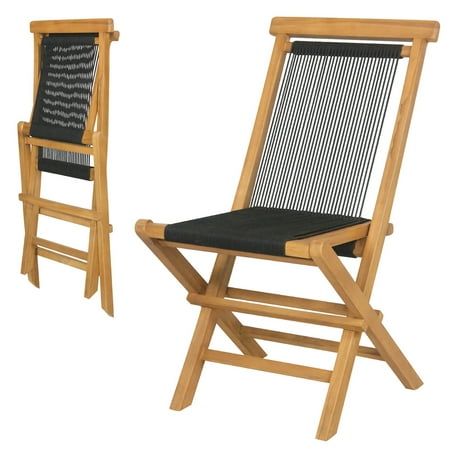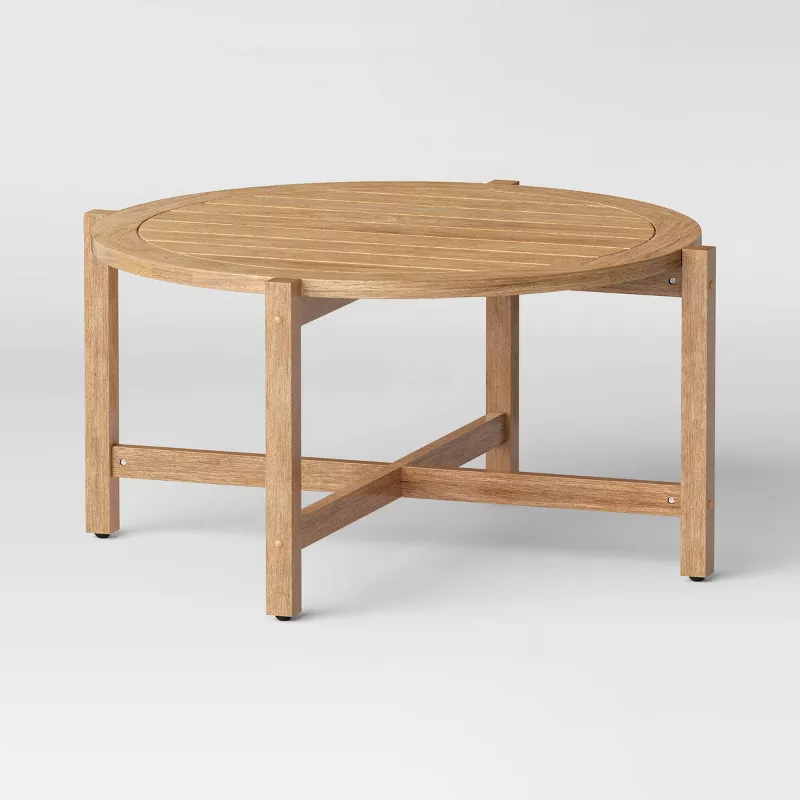What is the Best Wood for Outdoor Furniture? This is the Type to Buy, Whatever Your Budget
Wooden outdoor furniture is an investment — but which is the best for durability meets good looks?
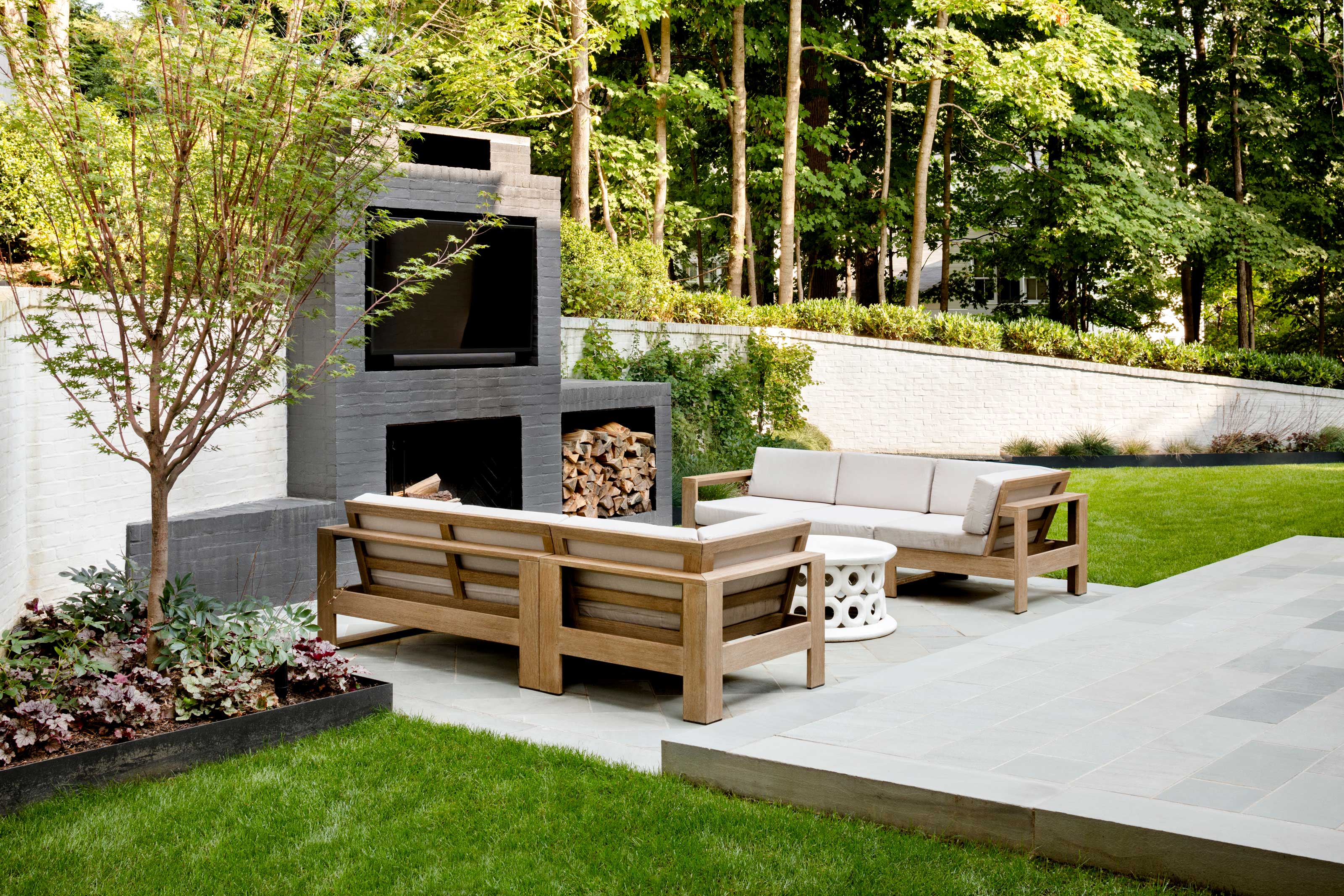
Furniture, whether for inside or outside, is an investment. It needs to look good and it needs to last. So before splashing any cash on garden pieces, it's worth considering, what's the best wood for outdoor furniture?
Why is this important? Well different timbers have different qualities. Some wood species, such as teak and cedar stand up to UV rays, damp, cold and inclement weather better than others, so require less maintenance and last longer.
Trees, such as teak and oak, tend to grow slower than others, like eucalyptus or acacia. This makes the wood more precious, and therefore more expensive. However, wood outdoor furniture of any kind should never be left on a grass lawn as it will eventually rot. Always place wooden furniture on a patio, deck or other solid surface.
Where wood is sourced from may also be an important factor in your decision-making process. Some people avoid tropical woods altogether, due to deforestation and traceability issues. So find out which timbers score best when it comes to outdoor furniture.
So which is the best? If you ask Livingetc's editors, our choice is between two. When budget's not an issue, we like teak for the perfect combination of stylish good looks and durability — however, there are some issues with sustainability. This is followed by acacia, a slightly-less robust but cheaper type of wood. Aside from those, each type of wood has its pros and cons — and you might not find the most modern styles in all kinds of timber.
Below, we break down what you need to know.
1. Acacia
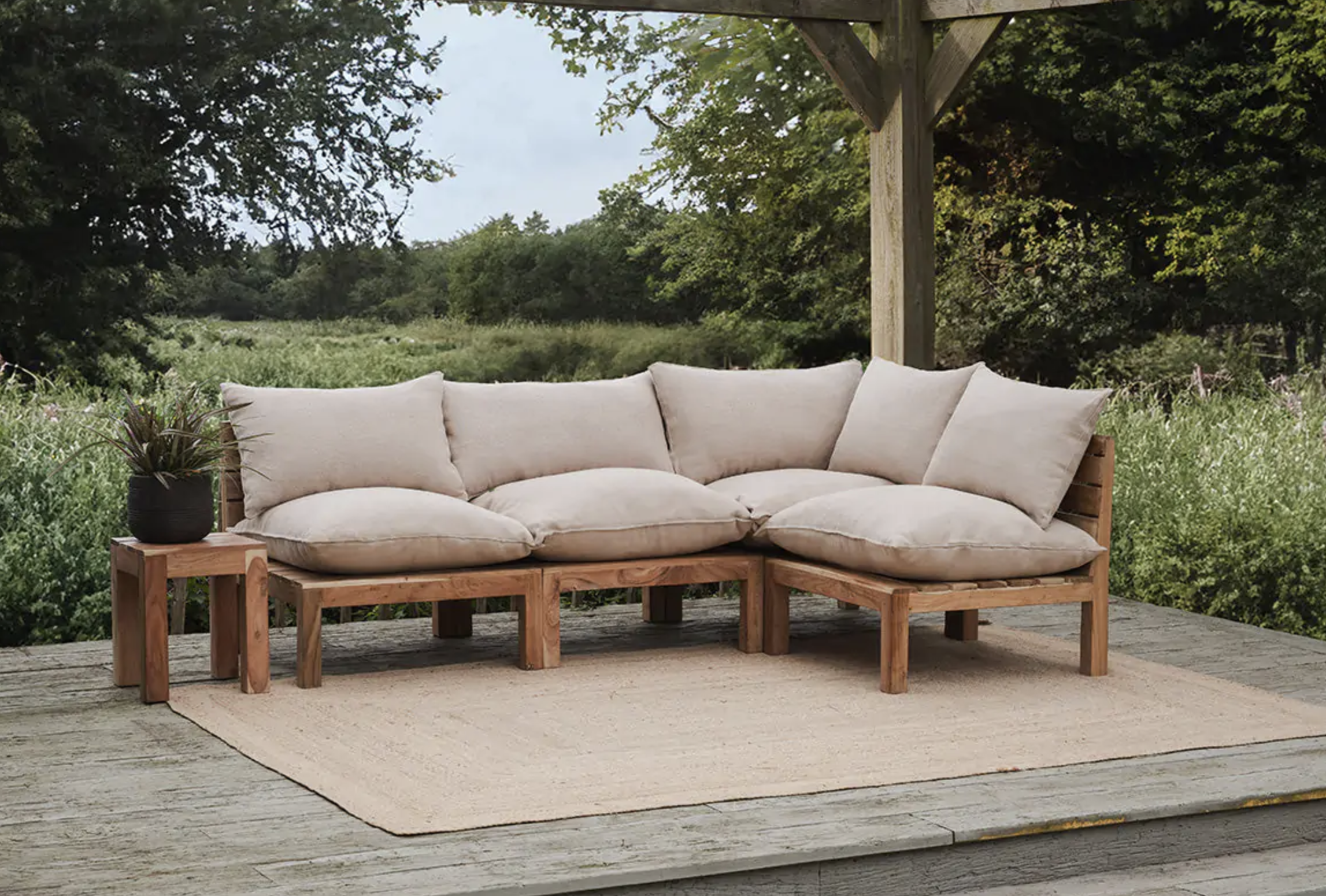
Acacia wooden outdoor furniture is a more affordable option for many people. This timber has warm honey tones and a rich grain. It is dense, durable and suitable for outdoor furniture, however, acacia is not as hardwearing as some other hardwoods, so will need to be stored away or properly covered if you experience harsh weather in the winter.
The Livingetc newsletters are your inside source for what’s shaping interiors now - and what’s next. Discover trend forecasts, smart style ideas, and curated shopping inspiration that brings design to life. Subscribe today and stay ahead of the curve.
"There are a number of brands that produce beautiful-looking acacia wood outdoor furniture that I think are a great option for certain spaces," says New York-based landscape designer Kat Aul Cervoni, founder if Staghorn Living.
When comparing teak vs acacia, you'll find there's a significant price difference. "First and foremost, acacia does tend to be much more economical than teak or ipe, but the trade off is that it may not last as long. Aesthetically, it still has a lovely color and can also be stained to give a varied finish."
2. Teak

Teak features heavily in outdoor furniture collections, due to its beauty and durability. With plenty of natural oils, teak is able to stand up to various types of weather, from sunshine to showers. Teak trees take 35-50 years to mature, so teak outdoor furniture is pricey. However, it can last decades.
That said, this timber is rife with controversies. Teak grown in Myanmar is sanctioned in the U.S, Canada, U.K and Europe, so the import and sale of it is illegal. However there appear to be loopholes and it is still sold. Even teak grown on plantations in Indonesia is linked to issues of deforestation and habitat loss, as well as the carbon implications of importing. If you do intend to buy teak, do your research.
"Teak outdoor furniture can last for generations, in different climates and with minimal to no maintenance," says Kim Asner, product director of Country Casual Teak. "It has a high oil content, which make it resistant to weather and pests, as well as to warping or splintering.
"When left outside, over time, teak will go from a warm, golden color to a silvery gray patina." However, you can restore weathered teak outdoor furniture to its original brown tone.
3. Cedar
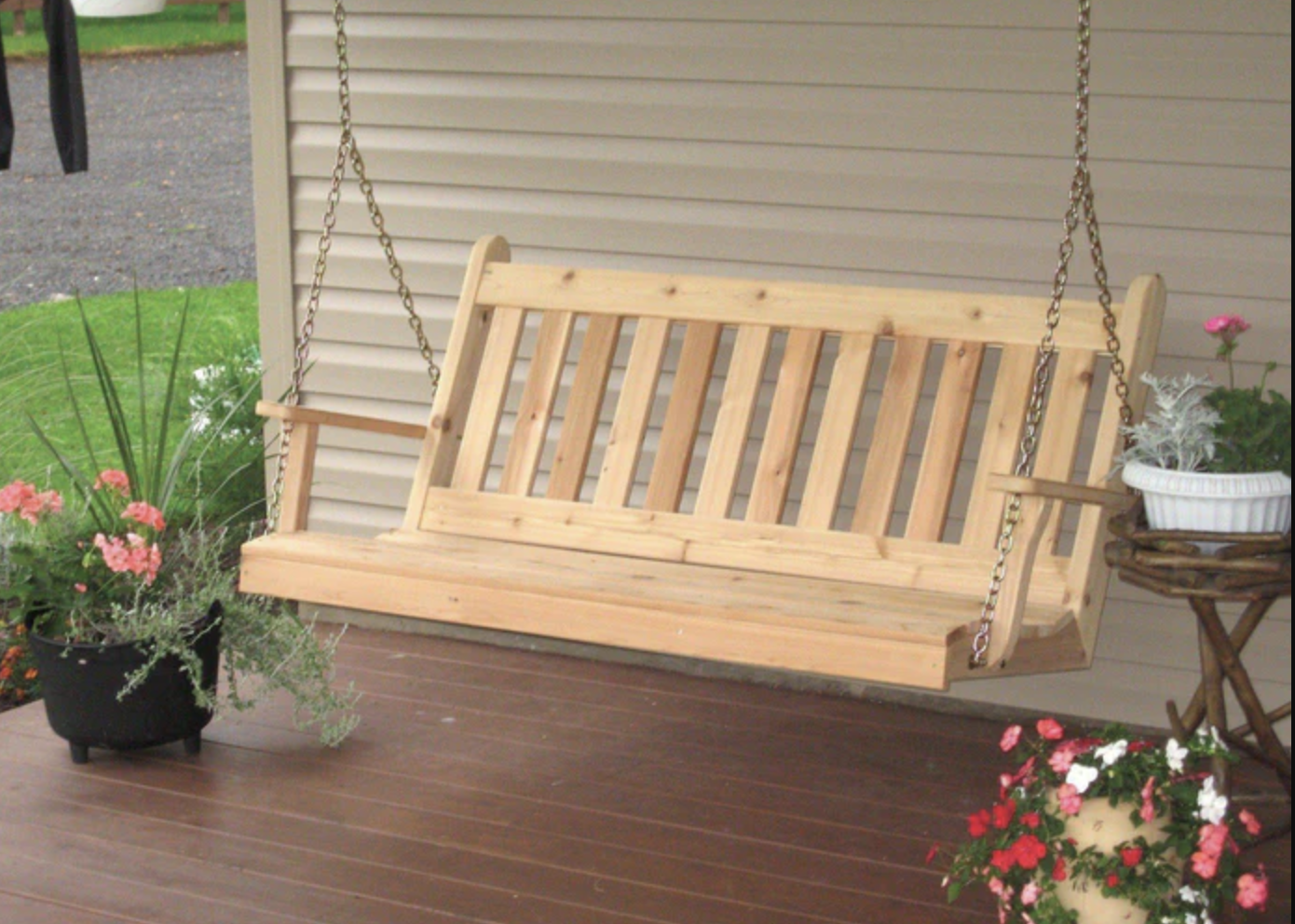
Cedar wood is a popular timber for outdoor furniture, as it naturally resists rot, decay and pests. (It was historically used for wardrobes due to its insect-repellent properties). It can also withstand UV light, rain and humidity, so it's low maintenance when used outside.
There are different tones of cedar wood, due to the various species, however some are stronger and more durable than others. Eastern Red Cedar, which grows on the east coast of the U.S. has a reddish hue and is stronger than Western Red Cedar, with a Janka hardness rating of 900. Although lower down the Janka scale than other timbers, both are highly suitable for outdoor furniture.
"Although teak is super durable, long-lasting, and low-maintenance, it is also extremely pricey," says Chris Peterson, author of the Essential Home Skills Handbook. "Cedar is attractive and significantly less expensive. Yet it's almost as durable as exotic hardwoods. That's why I've always purchased cedar outdoor furnishings. Cedar has a lot of natural oils like the more expensive woods. It will also age to a handsome gray, if left unsealed."
4. Eucalyptus
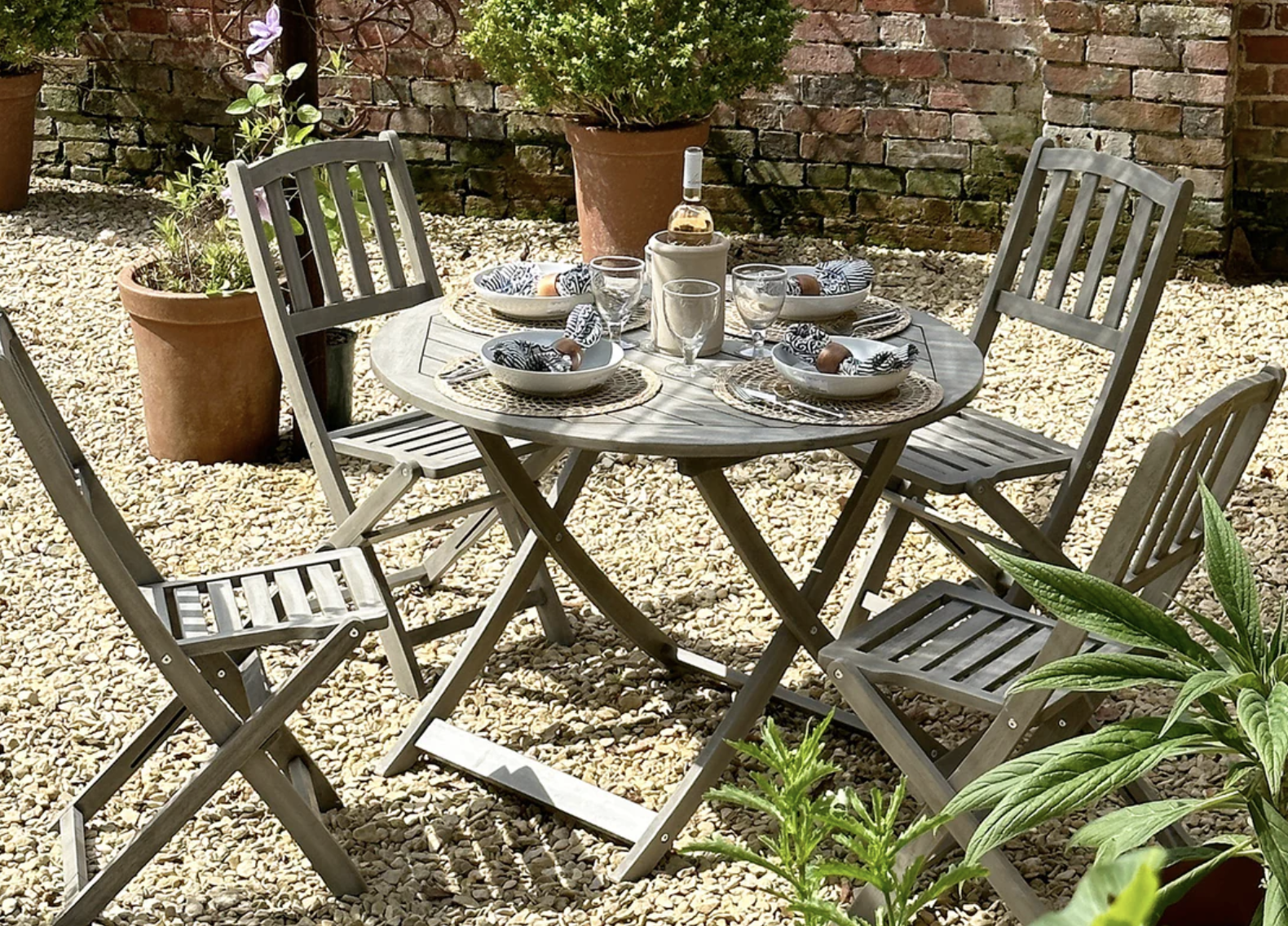
Eucalyptus is a fast-growing tree, so it's less expensive than slower-growing timbers, such as teak. In the US it may be referred to as Lyptus®, which is a trade name for a hybrid of Eucalyptus grandis and Eucalyptus urophylla, grown on plantations in Brazil.
It's generally a pale honey-toned wood with an attractive grain, however darker, reddish hues are also available. Although used to make outdoor furniture, Eucalyptus requires more care and maintenance than other types of timber, so it might not be the outdoor furniture that lasts the longest.
Eric Meier, founder of The Wood Database, comments on Lyptus® are that "it is moderately durable in regard to decay, however may be susceptible to insect attack."
5. Redwood

Native to California and southern Oregon, Redwoods are an iconic tree species, known for their towering heights. The timber has a warm reddish tone and natural oils which provide insect and moisture resistant qualities. This makes it a good choice for outdoor wooden furniture.
"We use vertical grain redwood lumber," says Raul Hernandez, founder of Forever Redwood. "It's quarter sawn, which is a lost art, but it makes a huge difference outdoors. It means the wood will never splinter or barely develop cracks even after decades in the weather.
"We restore the forest too, cutting just 10% per decade. Limiting the rate of cut is key. We then use the limited amount of felled timber to make patio furniture and shade structures. Nothing lasts longer outdoors than California redwood."
6. White Oak
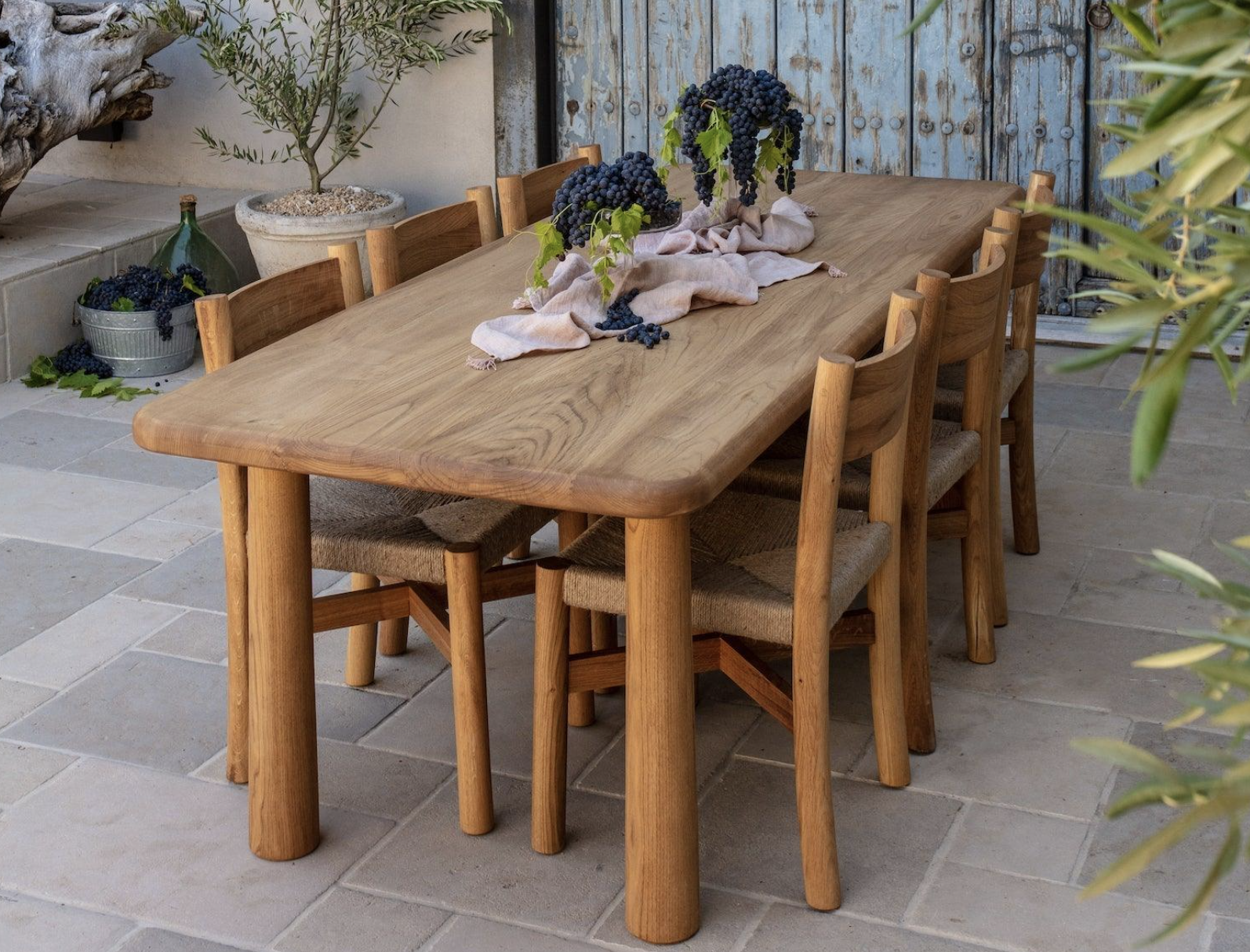
Oak has been used for centuries in Europe as a construction material for boats, churches and buildings, due to its beauty, durability and longevity. This demonstrates its ability to withstand the elements, so it's a great timber for outdoor furniture too.
As a dense, slow-growing hardwood, oak is at the pricier end of the market, so reserved for the best outdoor furniture brands. There is also debate about whether American white oak is as sturdy as English or European Oak, however, properly cared for, American white oak outdoor furniture should last for decades. It also has a paler tone than some other timbers and an attractive grain pattern.
"American white oak is a hardwood with a tight grain structure, which makes it resistant to impacts, wear, and physical damage," says Noëllie Sherrer, co-founder of Mojo Boutique. "This durability is crucial for outdoor furniture that must withstand the elements, including wind, rain, and sun exposure.
"In addition to its strength, American white oak has a natural resistance to rot and decay, thanks to its high tannin content. Tannins are natural compounds found in the wood that help prevent fungal growth and deter insects. This makes American white oak particularly useful in humid or damp environments where other woods might suffer from rot or insect damage.
"However, outdoor furniture made from American white oak generally requires treatment to enhance its longevity and maintain its aesthetic appeal. Applying a high-quality outdoor wood oil, stain, or sealant is recommended to protect the wood from moisture penetration, UV rays, and potential fungal growth. This is especially important in areas with high humidity or frequent rainfall, as untreated American white oak can absorb moisture, leading to swelling or cracking over time.
"It's advisable to store or cover American white oak furniture during the winter, particularly in regions that experience snow, freezing temperatures, or heavy rainfall. Exposure to harsh winter conditions can cause the wood to expand and contract, potentially leading to cracks, warping, or surface damage.
"Using protective covers or storing the furniture in a shed or garage during the winter months will help shield it from the elements and prolong its lifespan."
FAQs
What is the most cost-effective wood for outdoor furniture?
Acacia is one of the most cost-effective timbers for outdoor furniture. Also known as wattle, acacia is generally a fast-growing tree, so it's less expensive than other types of timber. However, there are many species grown in various parts of the world, so it is difficult to standardize its characteristics.
It's less durable than teak or redwood, yet with a little care and attention (including covering or storing outdoor furniture if you live somewhere with cold, damp winters), it will provide many years of use.
What is the best waterproof wood for outdoor furniture?
Timbers with high amounts of natural protective oils, such as teak, redwood and cedar, tend to be the most popular for outdoor furniture that is waterproof, as they can withstand different types of weather
"I find teak to be the most waterproof of all wood options for outdoor furniture," says Kat Aul Cervoni, founder of Staghorn Living. "That said, some special care should be given to teak and any other wood furniture you may have outdoors to help it look its best and last longer.
"Lengthy exposure to water is the enemy of wooden outdoor furniture regardless of lumber type, so doing what you can to limit that will help your furniture look its best and last longer.
"Avoid leaving your wooden furniture out on damp grass to keep it from being overexposed to moisture. If possible, cover or store your outdoor wooden furniture in the off season to give it a break from the elements (especially in areas with snow and ice in winter).
"In general, I mostly avoid using wood furniture in outdoor spaces that are very shady and slow to dry out. An example of this would be a mossy patio in a shade garden. This type of environment is most likely to be problematic for wooden furniture."
How is durability measured for wooden outdoor furniture?
The durability of timber is measured by the Janka hardness scale. This scores the wood's resistance to wear and dents, by forcing a small steel ball into it and measuring the pounds of force required, according to each species.
The Janka hardness scale is more important if you're intending to choose timber to make outdoor furniture, or you're considering lumber for a wooden floor or as a construction material.
Most manufacturers will already have selected a timber suitable for outdoor wooden furniture. It's also not necessary for the timber to be at the top of the scale. Teak and American White Oak sit in the lower, middle of the scale yet both are popular choices for manufactures who make wooden furniture, as they are hard-wearing, long-lasting woods, yet pliable enough to work with.
"As well determining how well a wood will withstand dents, the Janka hardness scale is also useful for predicting the difficulty in nailing, screwing, sanding, or sawing a given wood species," explains Erik Meier, founder, The Wood Database.
Jacky Parker is a freelance lifestyle journalist and writer, producing a wide range of features for magazines and digital platforms. She has written for Livingetc and its sister titles, Homes & Gardens and Country Homes & Interiors for more than 15 years, both as a freelance contributor and as Acting Digital Editor and Acting Style Content Editor, regularly reporting on the latest interiors, gardens and wellness inspiration, speaking to experts in their respective fields, and discovering the best tips.
Jacky has also written for other publications, including Sunday Times Style, The Telegraph, Architectural Digest, House Beautiful, ELLE Decoration, Red, Grand Designs and more.
